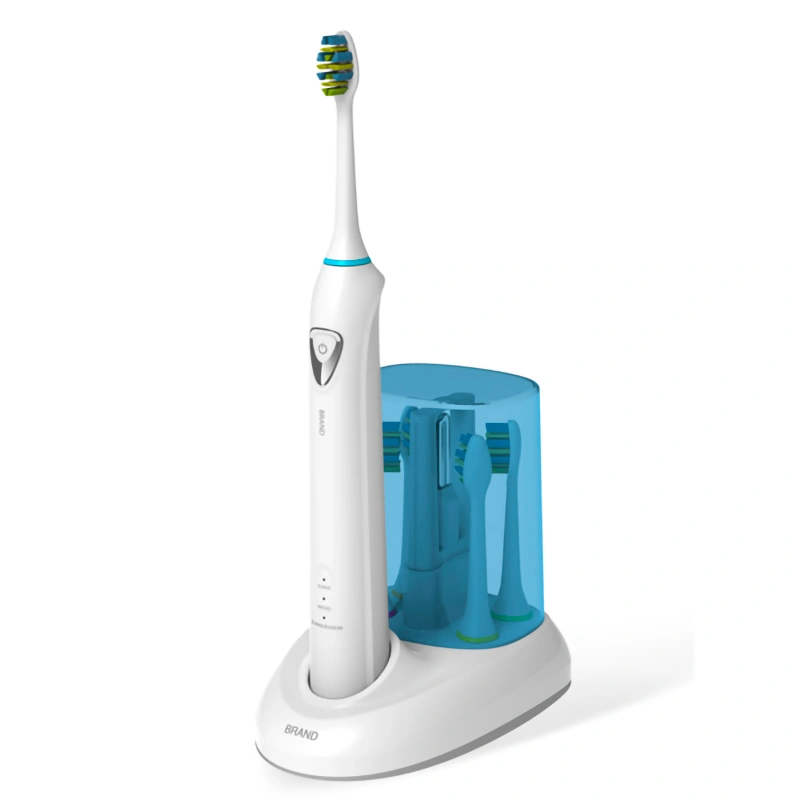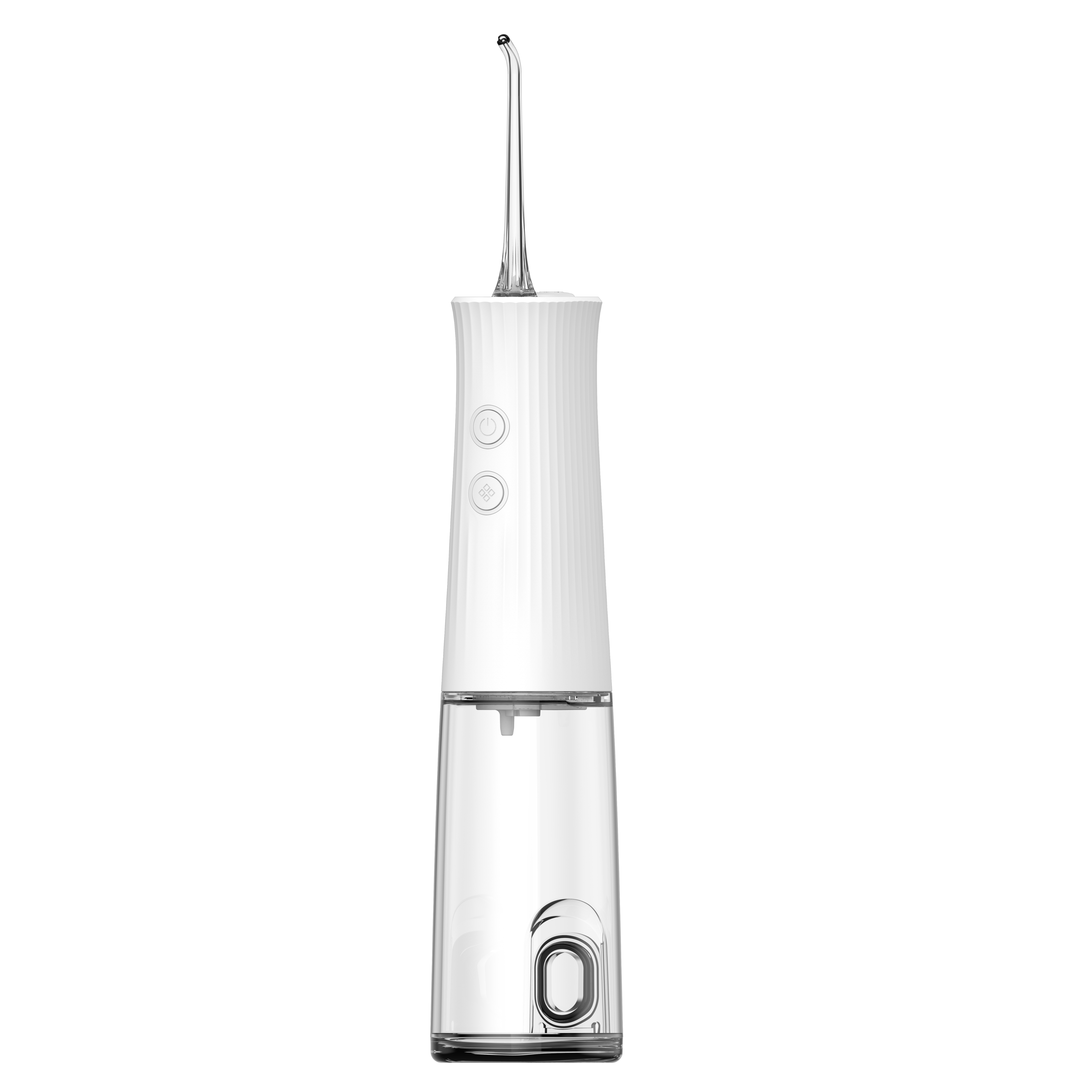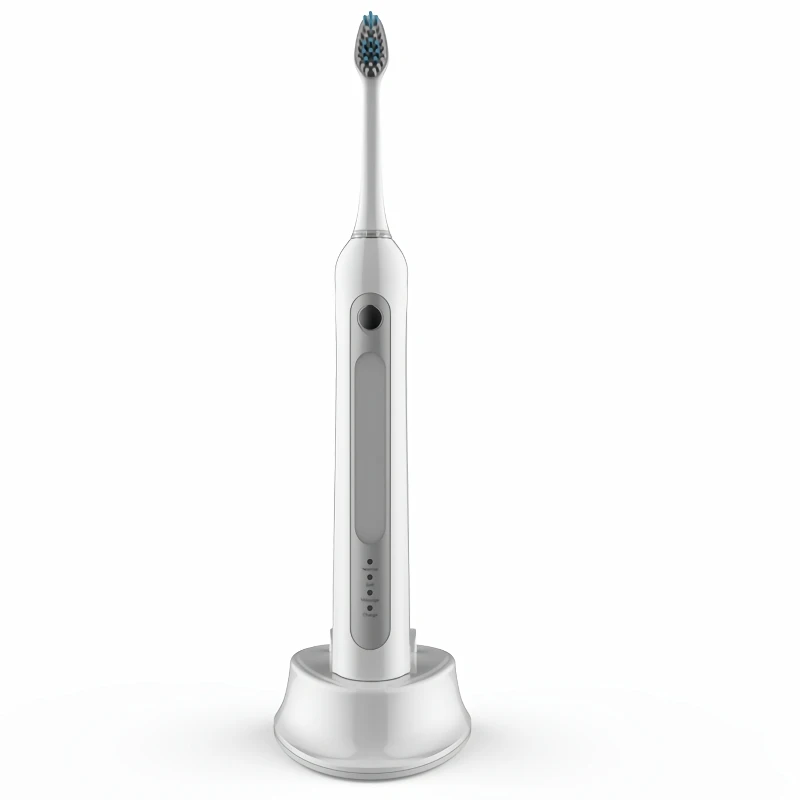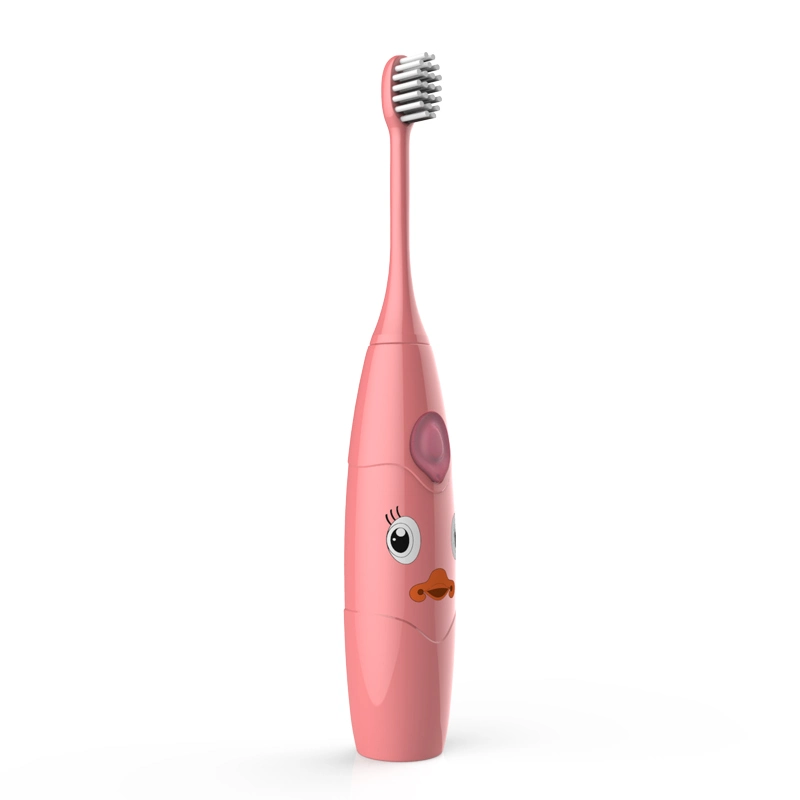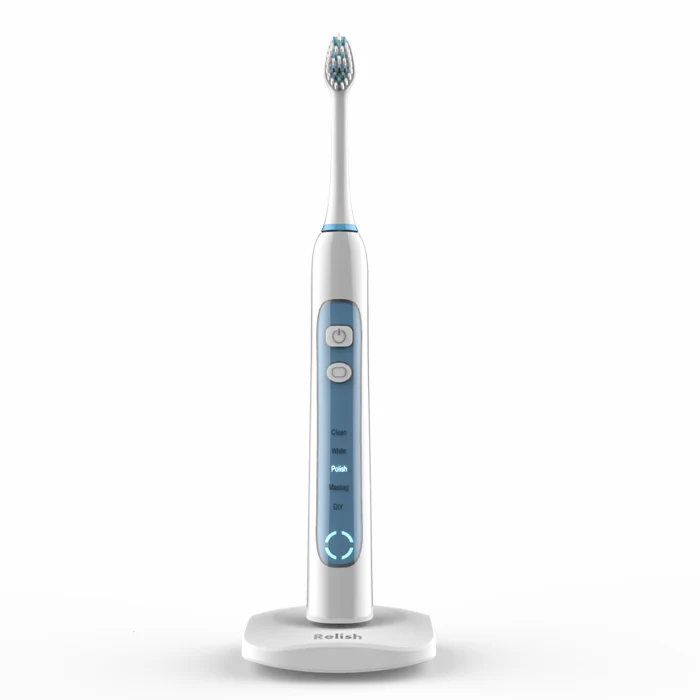Location:HOME > INFO CENTER >
Electric Toothbrush Efficacy and FAQ
Date:2022-03-16 11:47
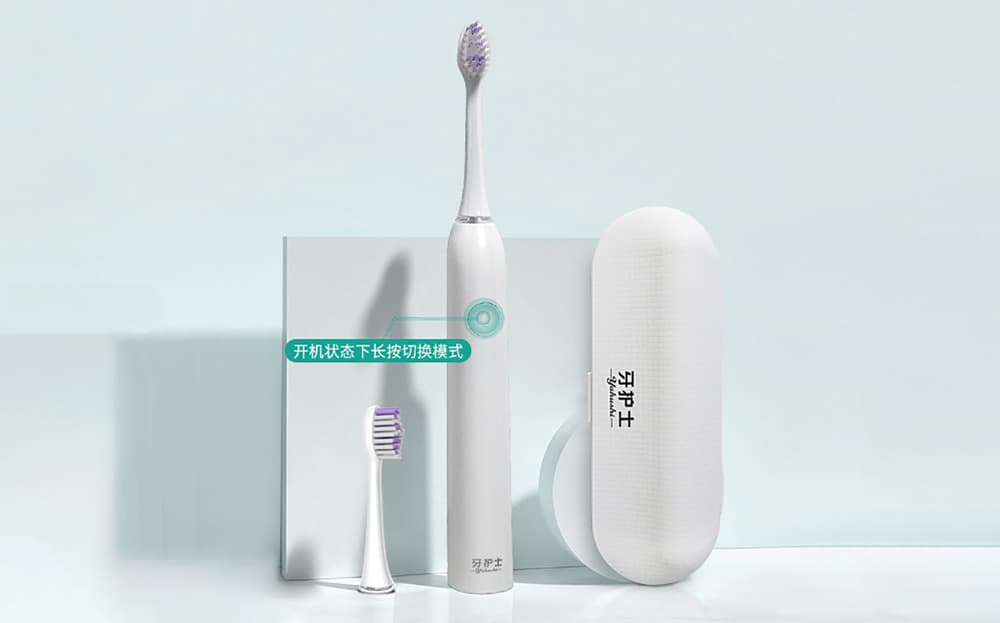
Electric Toothbrush Efficacy
A new study shows: Long-term use of electric toothbrushes slows the progression of periodontal disease and helps prevent tooth loss. As shown in an observational study over an eleven-year period published by the University of Greifswald in the Journal of Clinical Periodontology, patients using an electric toothbrush benefit from 20 percent less tooth loss than those using a manual toothbrush. For Oral-B, the leader and advocate in the electric toothbrush category, the findings validate its global efforts to improve oral health through plaque removal using Oscillating Rotating (OR) technology.
What many short-term studies have already indicated has now been confirmed on a larger scale: The University of Greifswald was able to prove the long-term effectiveness of electric versus manual toothbrushes in terms of improved oral health. Based on data from 2819 subjects in the "Study of Health in Pomerania (SHIP)", the status of periodontitis, caries and tooth loss was analyzed considering the type of toothbrush. The results show that the use of electric toothbrushes improves oral and especially periodontal health by removing plaque. This reduces gingival pocket formation and loss of periodontal attachment. As a result, patients who used an electric toothbrush had 20 percent less tooth loss than users of a manual toothbrush. The researchers therefore conclude that the basic use of an electric toothbrush is recommended.
Battery Type and Battery Life for Electric Toothbrush
In almost all models, the batteries are permanently installed and cannot be replaced once the maximum service life has been reached. Then it means that you have to say goodbye to your electric toothbrush and buy a new one. It is therefore important to include this point in your purchase decision. We will now show you which batteries are usually installed and where their advantages and disadvantages lie.
Lithium-ion battery
This battery can be found in most high-end models, such as Philips sonic toothbrushes and Panasonic sonic toothbrushes. It is characterized by a particularly high energy output and a long service life. This type of battery is also used in mobile phones, among other things, due to its particularly high performance and other advantages.
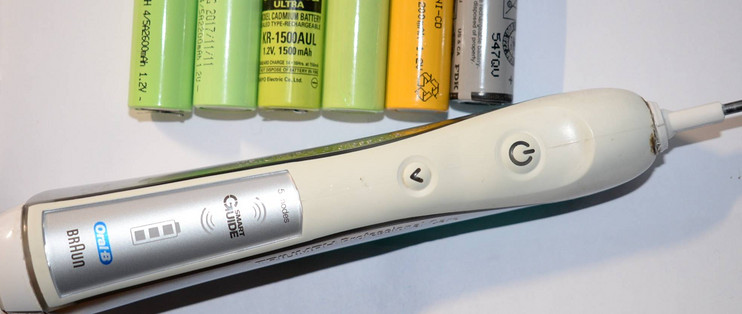

The most important properties of a Li-Ion battery
Low self-discharge
Anyone who has not used classic batteries for a long time, for example, knows that they discharge themselves even if they are not used. The self-discharge rate of a lithium-ion battery is about half as high, which is why it is still fully operational even after a long period of non-use.
High performance
Even when the battery charge level is low, the electric toothbrush
continues to work with this battery at full power.
Longer battery life
Compared to a NiMH battery, lithium-ion batteries have a much longer battery life. Sometimes even up to 60 days. On average, however, up to 3 weeks.
Shorter loading time
While some NiMH batteries need to be charged for up to 24 hours, a lithium-ion battery only needs 6-18 hours to be fully charged, depending on the version.
Higher manufacturing costs
Since the production costs of a lithium-ion battery are higher, this is also reflected in the price of the sonic toothbrush. However, this can be justified by the many advantages mentioned, as the performance and longevity are significantly better.
NiMH rechargeable battery (nickel metal hydride rechargeable batteries)
The NiMH battery can be found in many inexpensive models or rotary toothbrushes. The technology is a bit outdated, but not bad. It depends, among other things, on the individual quality of the built-in NiMH battery. Oral B, for example, uses high-quality NiMH batteries in its electric toothbrushes. Inexpensive no-name manufacturers often use cheaper NiMH batteries, which is why some devices give up the ghost after a short time.
The most important properties of a NiMH battery
self-discharge
NiMH batteries self-discharge even when not in use
Not suitable for particularly cold temperatures
They are not suitable for temperatures below -20 degrees, so not suitable for trips to particularly cold countries.
memory effect
NiMH rechargeable batteries have a memory or battery inertia effect. You should fully charge and discharge them, otherwise the battery life will be shortened.
battery life
the battery life is an average of 5-10 days
loading time
Compared to a lithium-ion battery, the charging time is quite long. Depending on the quality of the battery, it can last up to 24 hours. In addition, an electric toothbrush with a NiMH battery should be removed from the charging station after it is fully charged, as it has to be completely discharged again.
Rapid drop in performance
If the NiMH battery is no longer sufficiently charged, its performance will also be reduced. A lithium-ion battery, on the other hand, continues to clean at full power even when the charge level is low.
You can usually find out which battery was installed in the respective electric or sonic toothbrush in the item description. In the user manual you will also find useful information on how to use the battery to maximize its lifespan.
Additional Functions and Accessories of Electric Toothbrush
Depending on the manufacturer and model, different functions and additional accessories are offered. Some functions are essential from our point of view, but you don't necessarily need others. We have put together a clear overview for you of which ones exist and which ones really make sense.
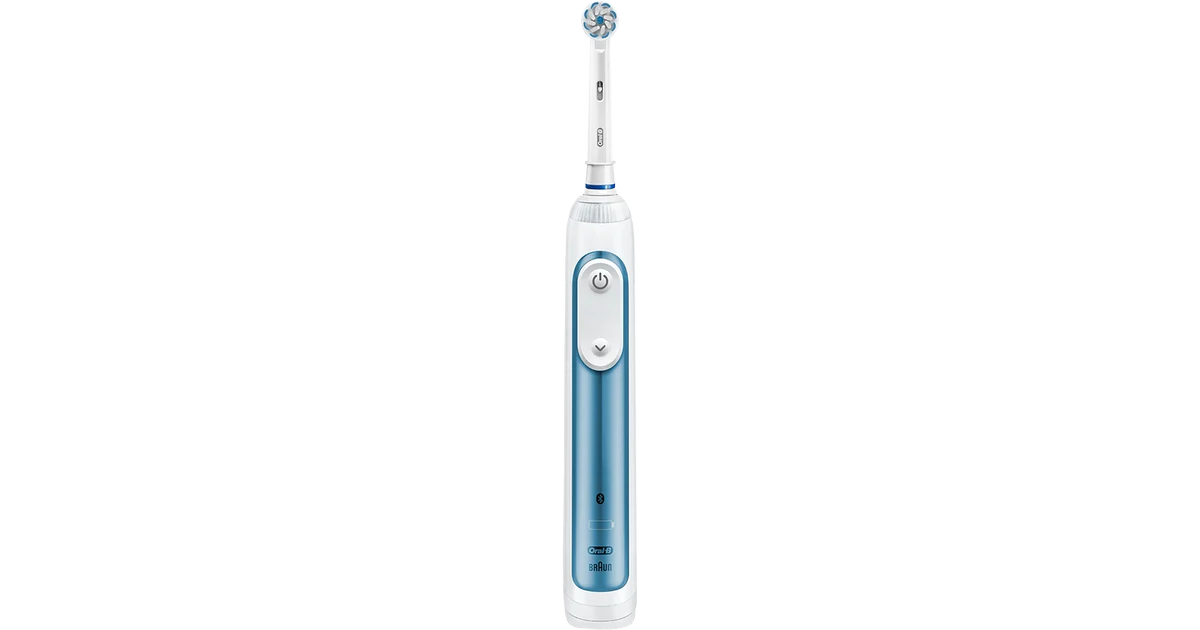
Timer function
In our opinion, this function is extremely useful. It signals you exactly when the optimal cleaning time has been reached. If you brush your teeth with a normal manual toothbrush, you usually only estimate the time and it is often well under the recommended 2 minutes. There are two different timer functions and many models even include both as an option.
The classic 2-minute timer
The classic 2-minute timer signals when the full 2 minutes have been reached via a vibration. Many models even switch off automatically afterwards.
The quadrant timer
The quadrant timer is even more accurate than the classic 2-minute timer because it gives a hint every 30 seconds. So you know exactly how long you have to brush each of the four jaw quadrants and clean all teeth evenly.
Pressure control or pressure sensor
The pressure control is also a very useful and indispensable function. Unless you're already a pro at using an electric or sonic toothbrush and know exactly how much pressure to apply.
Because we are used to it from a manual toothbrush, we usually apply far too much pressure when brushing, which can be extremely harmful. Too much pressure leads to damage to the enamel, deterioration of the enamel and injuries to the gums.
Tooth enamel protects your teeth from damage caused by acid, sugar and the like. If this becomes brittle or breaks down, harmful bacteria can attack the tooth substance more quickly and damage the teeth. Caries and co have it much easier now.
The pressure control warns you if you are applying too much pressure while brushing your teeth and is therefore a very useful function. On some models, an acoustic warning tone is emitted, on others there is a visual pressure control in which an LED light or LED ring lights up red.
UV disinfection
What initially sounds like an indispensable high-tech function is, on closer inspection, rather controversial. UV disinfection is used in many hospitals to kill harmful bacteria and has been proven to be effective.
After each use, bacteria from the cleaning process also accumulate on the brush head, which should be killed with the help of UV disinfection. UV disinfection is usually only found in premium devices, such as the Philips toothbrush Sonicare FlexCare Platinum HX9172/15.
After use, place the brush head in the integrated UV cleaning device for a few minutes, which is said to kill 99% of bacteria. However, the effect of this type of UV disinfection on sonic toothbrushes is still controversial, which is why it is a nice gimmick, but not an indispensable detail. It is sufficient if you rinse the brush head thoroughly under warm water after use and replace it regularly.
Additional apps for electric toothbrushes
Some manufacturers, such as the Philips toothbrush, offer loading an intelligent app with personalized tooth brushing coaching. For example, the Sonicare FlexCare Platinum or the DiamondClean Smart are compatible. Pay attention to the Bluetooth symbol on the packaging.
You load the app onto your mobile phone and connect it to the base station or handpiece via Bluetooth. Then you can, for example, enter your weak spots in the mouth area and have the app remind you to brush them particularly thoroughly.
You can also record your brushing behavior and a visual 3D image shows you which teeth you neglected to brush. The app also shows you when you should change your brush head and has also integrated the appropriate Amazon link.
Other apps, such as the Oral B sonic toothbrush, record your individual brushing sessions and show you exactly how long you brushed in total and whether you applied too much pressure. You can also enter whether you used dental floss, an oral irrigator or a tongue cleaner. The Oral B Pro 5000 , for example, is compatible with the Oral B app.
The individual brushing processes are clearly stored so that you have a detailed overview of your tooth brushing behavior.
These apps are essential for some users and gimmicky for some. You have to decide for yourself whether you need it or not. They are certainly a good help for people with dental problems.
Children's electric toothbrush
Anyone who has children knows how difficult it can be to introduce the much-needed toothbrushing ritual. Most children find it boring, do not yet understand the meaning behind it and the technique still needs to be practiced.
Therefore, electric toothbrushes for children are a great help. They learn to brush their teeth thoroughly and long enough in a playful way. So that it doesn't get boring, there are great Disney tunes that play until the correct cleaning time has been reached. Or funny stickers to stick on and well-known Disney characters on the toothbrush itself.
Please note that the use of an electric toothbrush for children is only recommended from the age of 3.
Advantages and Disadvantages of an Electric or Sonic Toothbrush
Advantages
● depending on the model, they remove up to 10 times more plaque
● gaps and hard-to-reach areas are also thoroughly cleaned (also for wearers of braces, bridges or implants)
● Prevents periodontal disease, bleeding gums and tooth decay
● reduces bad breath
● extra programs for gum massage for healthy gums with good circulation
● removes up to 100% of superficial stains, e.g. B. through coffee or tea, you have visibly whiter teeth
● you only need a pea-sized amount of toothpaste per application
● the timer allows you to keep to the cleaning time recommended by dentists
● no damage to tooth enamel or gums thanks to the pressure control
Disadvantage
● you should always make sure that the battery is sufficiently charged
● compared to a manual toothbrush, they are more expensive to buy
FAQ - Frequently Asked Questions
Can electric toothbrushes also be used on sensitive or inflamed gums?
yes you can Some programs even support the healing process by eliminating bacteria on the gum line or by giving a massage to stimulate circulation. However, we recommend using a sonic toothbrush, as its vibrations are gentler on the gums than a rotary toothbrush. You should also choose the sensitive program when choosing a program.
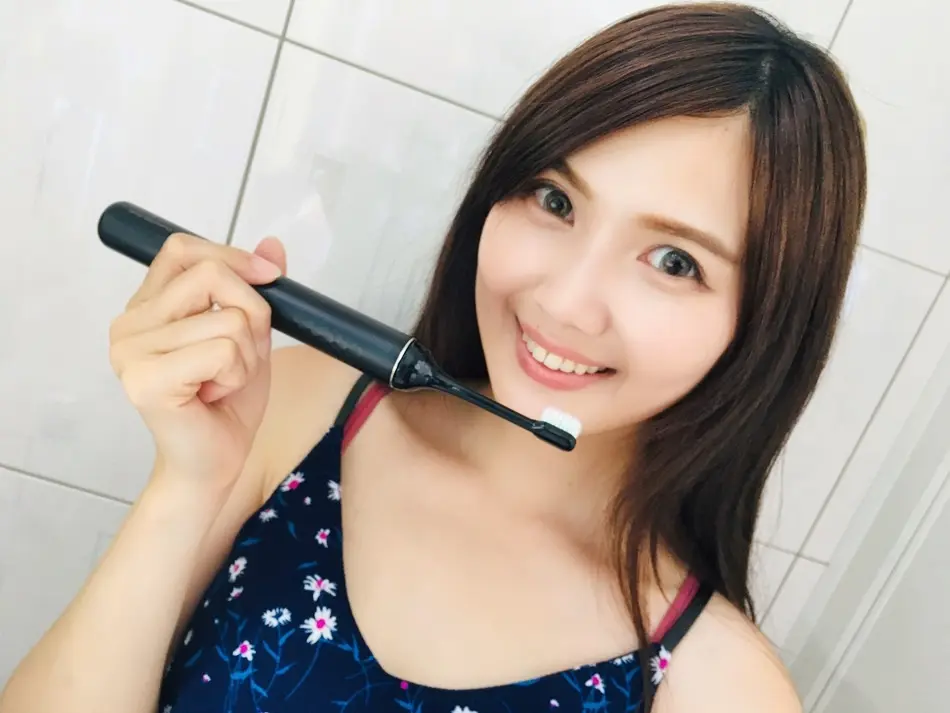
Can you use electric toothbrushes if you have a pacemaker?
Many electrical devices impair the function of a pacemaker and may therefore only be used at a sufficient distance or not at all. You don't have to worry when using a sonic toothbrush or electric toothbrush. According to the German Heart Foundation, they are just as harmless as a hair dryer, shaver or curling iron.
Are electric toothbrushes safe for pregnant women?
Are you worried about whether the vibrations of an electric toothbrush or sonic toothbrush will harm your child? You don't have to and you can use it without hesitation.
Can children use an electric toothbrush?
Even children's mouths can get to know an electric or sonic toothbrush from the age of 3 years. It is even recommended, because children still have to learn the right technique and how to keep to the optimal cleaning time. Electric toothbrushes support this, for example with great Disney melodies that motivate your children. When the melody is over, the electric toothbrush can be put aside. There are other highlights, such as colorful stickers or signal tones that add variety and help with brushing your teeth. It is important that the bristles are particularly rounded and soft, otherwise there is too much risk of injury. There are extra electric toothbrushes for children from both Philips and Oral B.
Can I use an electric toothbrush after wisdom tooth surgery?
Basically yes, but we recommend using a manual toothbrush until the wounds have healed. The risk of accidentally getting wounded while cleaning is too high. With a manual toothbrush you can carefully brush around the wound and decide for yourself how much pressure you want to apply.
How to clean an electric toothbrush?
Bacteria from the mouth, toothpaste and dust from the bathroom collect on the brush head and the handle after every brushing. It is therefore very important to regularly clean not only the brush heads, but also the handpiece and the base station.
You should wash the brush head and the handle thoroughly under running water after each use to remove toothpaste and leftover food from both. If you want to be really thorough, you can soak the brush head in a cleaning solution made for braces or dentures once a week.
The handpiece and base station should be thoroughly cleaned with a vinegar solution once or twice a month.
How often do the brush heads need to be replaced?
The brush heads should be replaced every two to three months as use causes bacteria to build up in the bristles and the bristles naturally wear out.
Philips toothbrushes have a reminder function in the app that tells you exactly when it's time for a new brush head. On the other hand, Oral B toothbrushes have a special brush head whose bristles change color when they are worn. They call themselves memory bristles.
Does an electric toothbrush help reduce bad breath?
Yes and no. Bad breath can have many causes. For example, bad breath occurs with colds or gastrointestinal diseases. But bad breath is also caused by deposits in the spaces between the teeth or on the gum line. Since both are cleaned much better and more intensively with an electric toothbrush, unpleasant bad breath caused by deposits in the gaps is reduced.
Can you also use an electric toothbrush as a wearer of braces?
Not only can you, you should. Since the narrow spaces between the brackets in particular are a real invitation for food residues and bacteria. They can only be cleaned in a very cumbersome and time-consuming manner. With a rotary or sonic toothbrush and the appropriate attachments, you no longer have to struggle with it. It's quick, easy and really effective.
Can an electric toothbrush prevent periodontal disease?
Actually very good. The development of periodontal disease is a long process in which many factors are involved. One of them is plaque that is not thoroughly removed. They cause tartar to form, which in turn leads to receding gums if not professionally removed regularly. The exposed tooth necks are defenseless against invading germs and the degradation of the bone substance begins.
An electric toothbrush not only thoroughly cleans the teeth, but also the areas on the gums and between the teeth where harmful plaque accumulates. With regular and thorough use, you reduce tartar formation and can protect yourself from periodontal disease. Electric toothbrushes are therefore highly recommended as periodontal prophylaxis.
STORY
Egypt – known for its pharaohs, pyramids and maybe even the first toothbrush?
The fact that the people of ancient Egypt were ahead of their time is proven by the construction of the world-famous and particularly impressive pyramids. But when it came to brushing their teeth, they seemed to be way ahead of the curve. During the excavations of the tombs of the pharaohs, around 4000 years old evidence was found of something that bears a strong resemblance to a toothbrush. A thin, elongated twig, clearly frayed at one end. It had been chewed until bristle-like fringes developed. One of the first toothbrushes known to us was ready. A clever idea.
By the way, we find this method of tooth cleaning in some primitive peoples to this day. The branches are chewed until fringes appear, which are then used for cleaning and chewed fringes are simply spat out.
Animal bones plus horse hair make what?
Exactly. The first variant of a toothbrush as we know it today. However, there were still worlds in between, because we are now in the 1500th century, in Asia. This is where inventive minds came up with the idea of using a stable handle made of animal bones instead of branches and adding a horsehair attachment. These are particularly strong and resemble the bristles we are familiar with. But the production was very complex, which is why it was far from being suitable for the masses. Unfortunately, this toothbrush was only reserved for rich merchants, rulers and the nobility, as only they could afford to buy it.
William Addis and the world's first toothbrush factory
The English businessman William Addis saw the great potential of the toothbrush and wanted to make it suitable for the masses. In around 1870 he founded the world's first toothbrush factory and began to produce large quantities at full speed. He continued to use bone for the handle, but replaced horse hair with cowhide. Unfortunately, the production costs were higher than initially calculated, so that only wealthy people could still afford this luxury product. Unfortunately, his calculations did not work out, and the general population had to wait almost 150 years for the first toothbrush that was affordable for everyone.
1938 - Wallace Hume Carothers saves the commercial toothbrush
But different than you might think. He was not involved in the invention of today's toothbrush, but his invention is contained in every toothbrush. Nylon is the magic word that finally made the toothbrush affordable and suitable for the masses. Animal hair was replaced by the much cheaper and, above all, sterile nylon, and the handles were no longer made of bone but plastic. From now on, the toothbrush conquered all bathrooms.
A Swiss doctor with a great idea - Broxodent
A few years later, in 1954, there was the very first version of an electric toothbrush, which everyone today used as a template. It was invented by Swiss doctor Philippe Guy-Woog. It was the very first toothbrush powered by an electric motor, the bristles of which automatically moved back and forth. But Doctor Philippe Guy-Woog was not a businessman, which is why it took several years before the first electric toothbrush came onto the mass market.
1963 - Oral-B begins trial of Mayadent
Oral-B was fascinated by the Broxodent electric toothbrush and took up the idea just a few years later. The first electric toothbrush suitable for the masses, Mayadent, was developed. Although it was very popular, it did not initially achieve great international success for various reasons. On the one hand, there was still a lack of evidence at that time that it really cleaned better than a manual toothbrush and the technology was nowhere near as mature as it is today.
1987 - The big breakthrough of the rotary toothbrush
Although the breakthrough was not immediately reflected in the sales figures, the technology was finally the right one. Oral-B launched its first model with oscillating, rotating heads, and finally electric toothbrushes clean better than manual toothbrushes did. What was still missing back then was the round brush head, which is why cleaning was still a bit cumbersome and also associated with injuries to the gums.
After another 10 years, competitor Dr. Best to introduce a variant with a swinging head that was gentler on the gums and much easier to use. It developed into the popular market leader for some time.
In 1990 things got rounded
In the truest sense of the word, because Oral B launched the Oral B D5 in 1990 with the round brush head that is still familiar today. The breakthrough had finally come. The round brush head was much more comfortable to use and removed plaque and dirt much better than a manual toothbrush.
1992 Philips develops the first sonic toothbrush
With the first round brush head and improved technology, the electric toothbrush had conquered many bathrooms around the world, so that the competitors were also awake. Philips launched the first electric toothbrush with sonic technology in America in 1992 and it wasn't long before it was also available in Germany. In 2002, the first model of today's popular Philips Sonicare followed.
Since then, premium manufacturers such as Oral-B, Philips and Panasonic have been constantly researching dental care technology and regularly bringing optimized models onto the market. More programs, higher vibrations, special brush heads and, since 2014, even apps that can analyze and improve your tooth brushing behavior with clever functions.
2008 : the birth of the ultrasonic toothbrush
Of course, there were other manufacturers and brands between these milestones. For example, in 2008 Emmi Dent introduced the first genuine ultrasonic toothbrush. However, this technology is not yet as widespread as rotary or sonic toothbrushes. It is very suitable for sensitive gums, but a single brushing process takes up to 8 minutes longer. Therefore, we mostly only find the *real* ultrasonic technology in dentists and professional cleaning.
The end is far from in sight
If we look at the history of the toothbrush and the development milestones in between, one thing is certain: the journey of the electric toothbrush is far from over.
As a professional manufacturer of electric toothbrush and oral irrigator / water flosser, Shenzhen Relish provides various types of electric toothbrush wholesale and OEM customized services. You can also wholesale water flosser from Relish at factory price. We can provide you highly competitive prices and look forward to working with you.

Post a comment
- All comments(0)
No comments yet, come be the first!

 日本語
日本語 Español
Español Deutsch
Deutsch 中文
中文